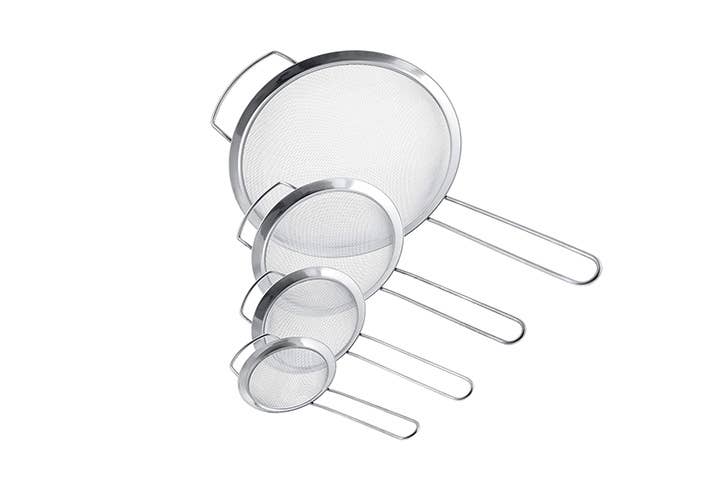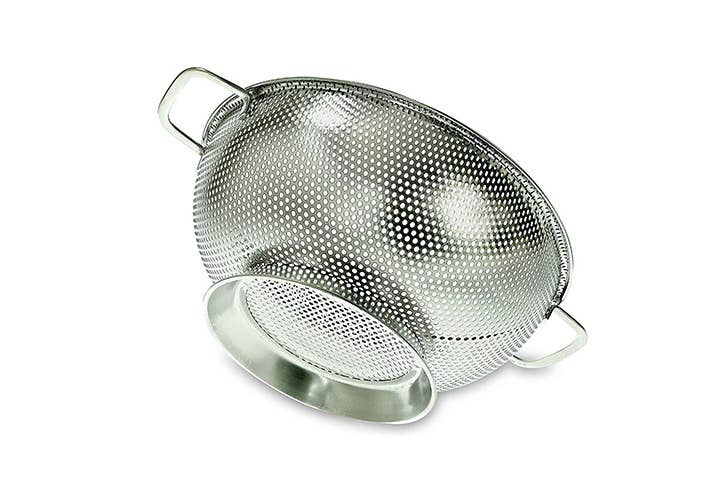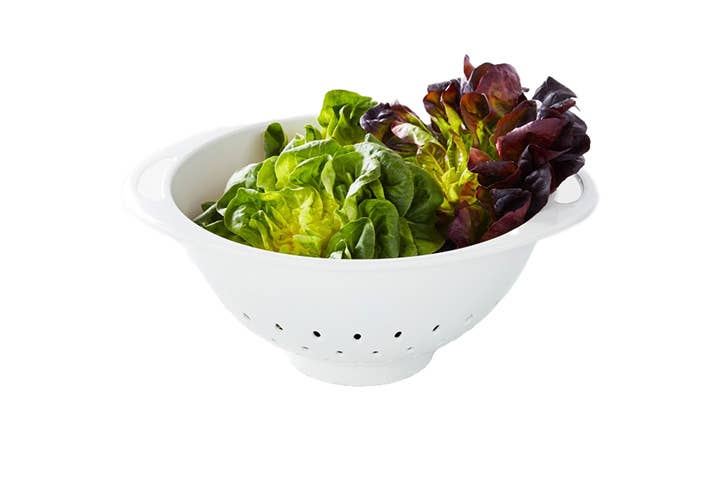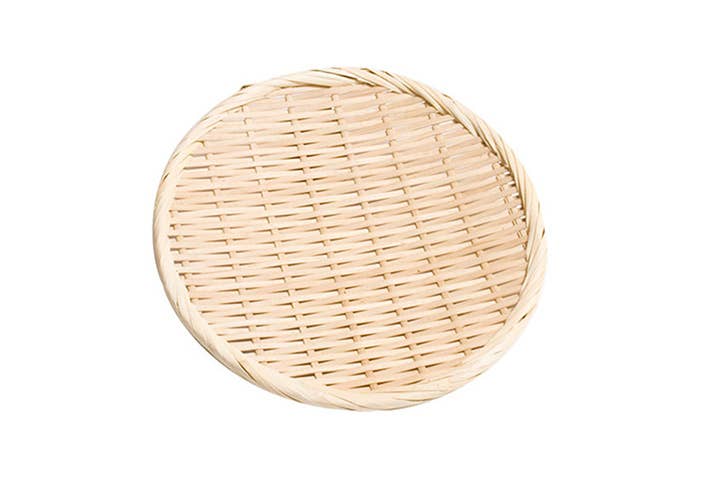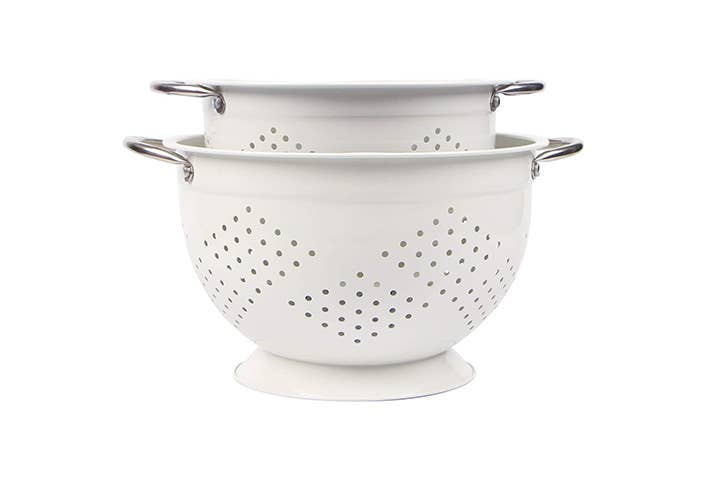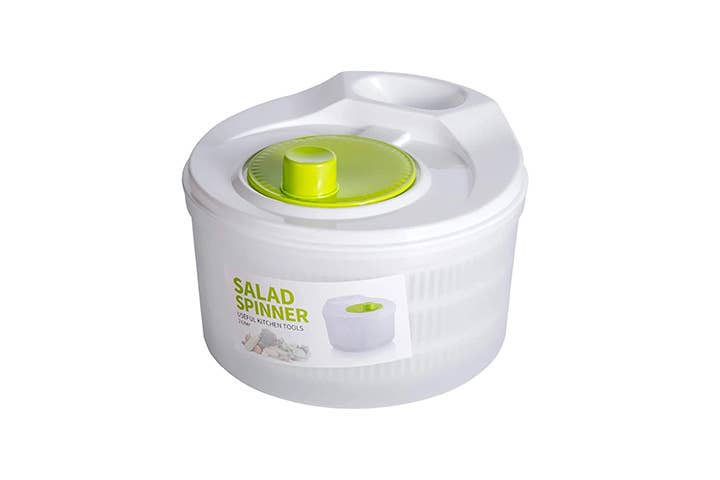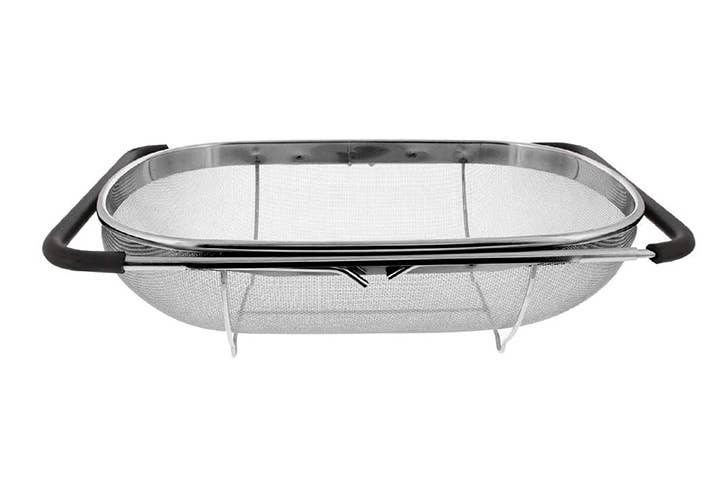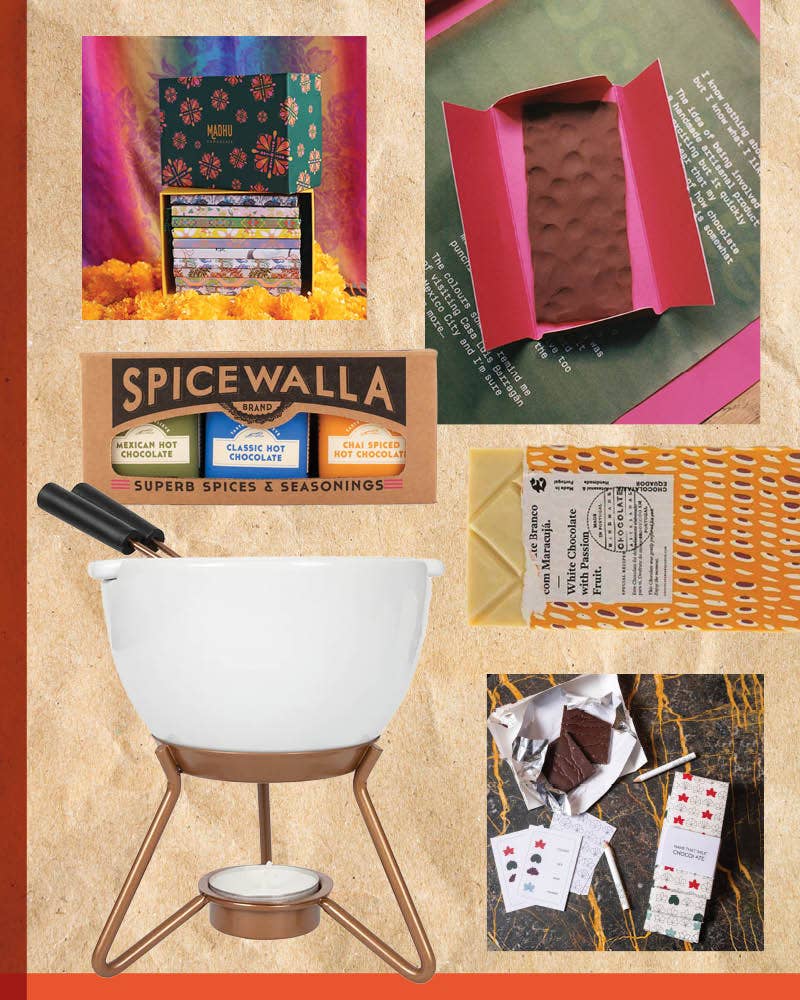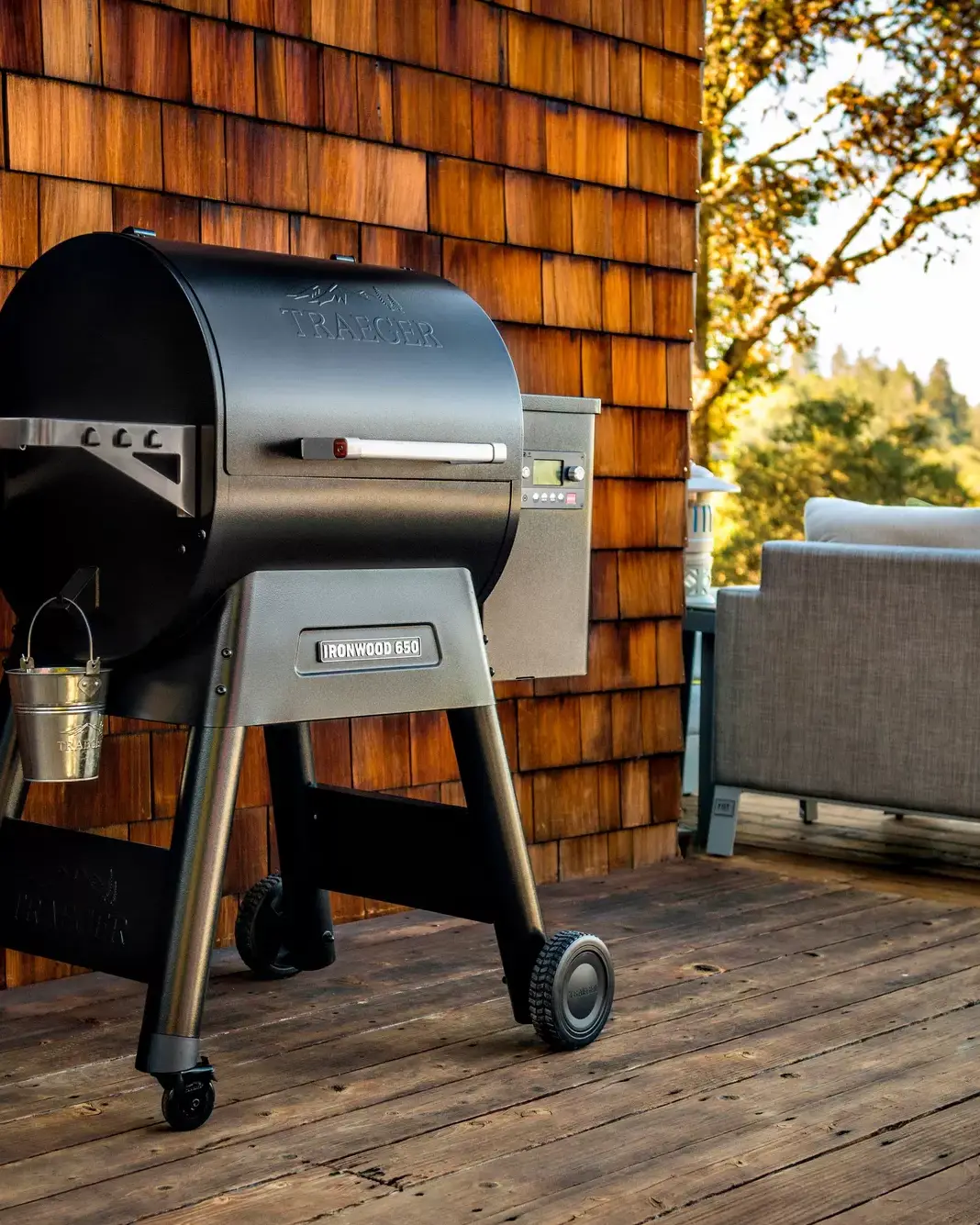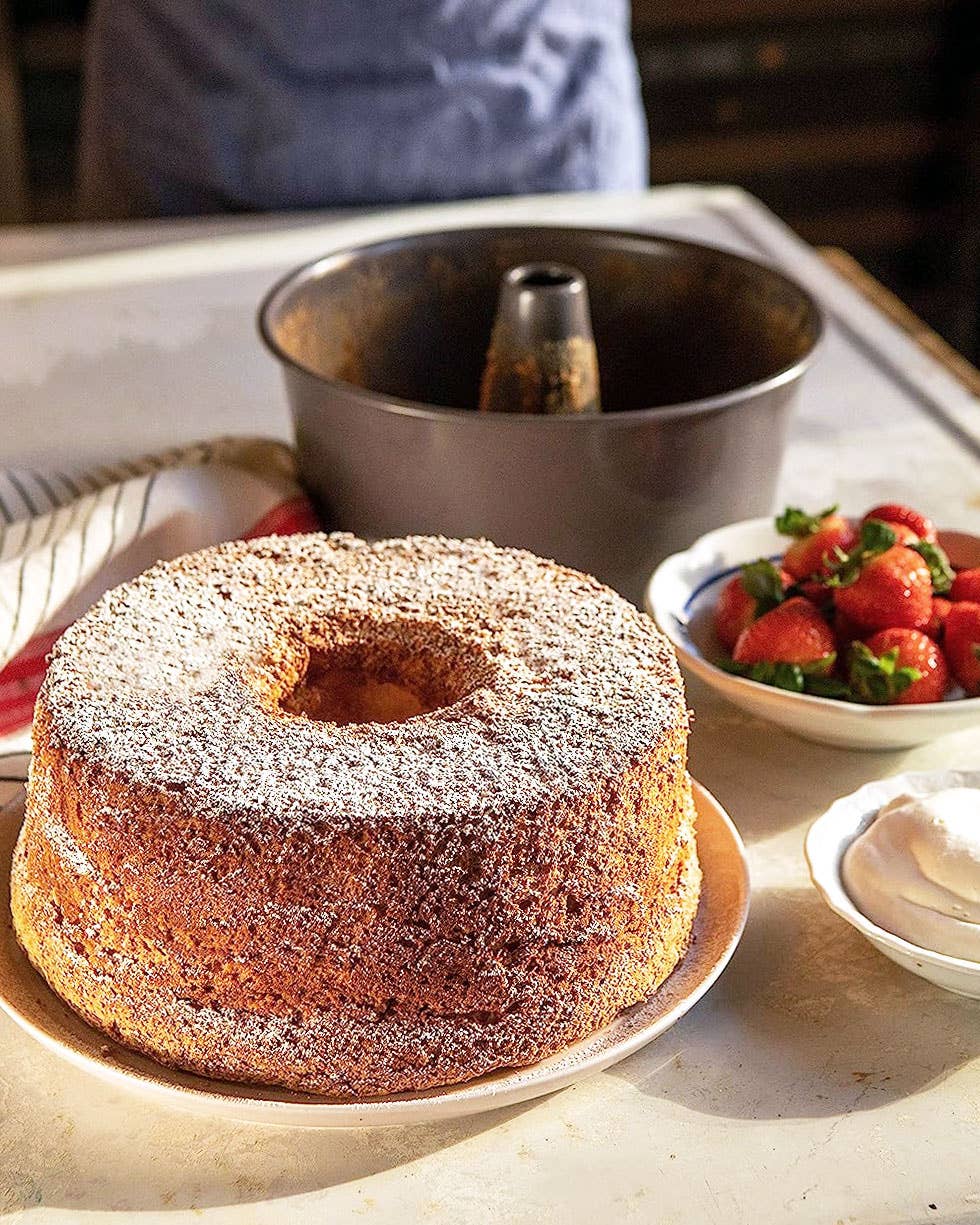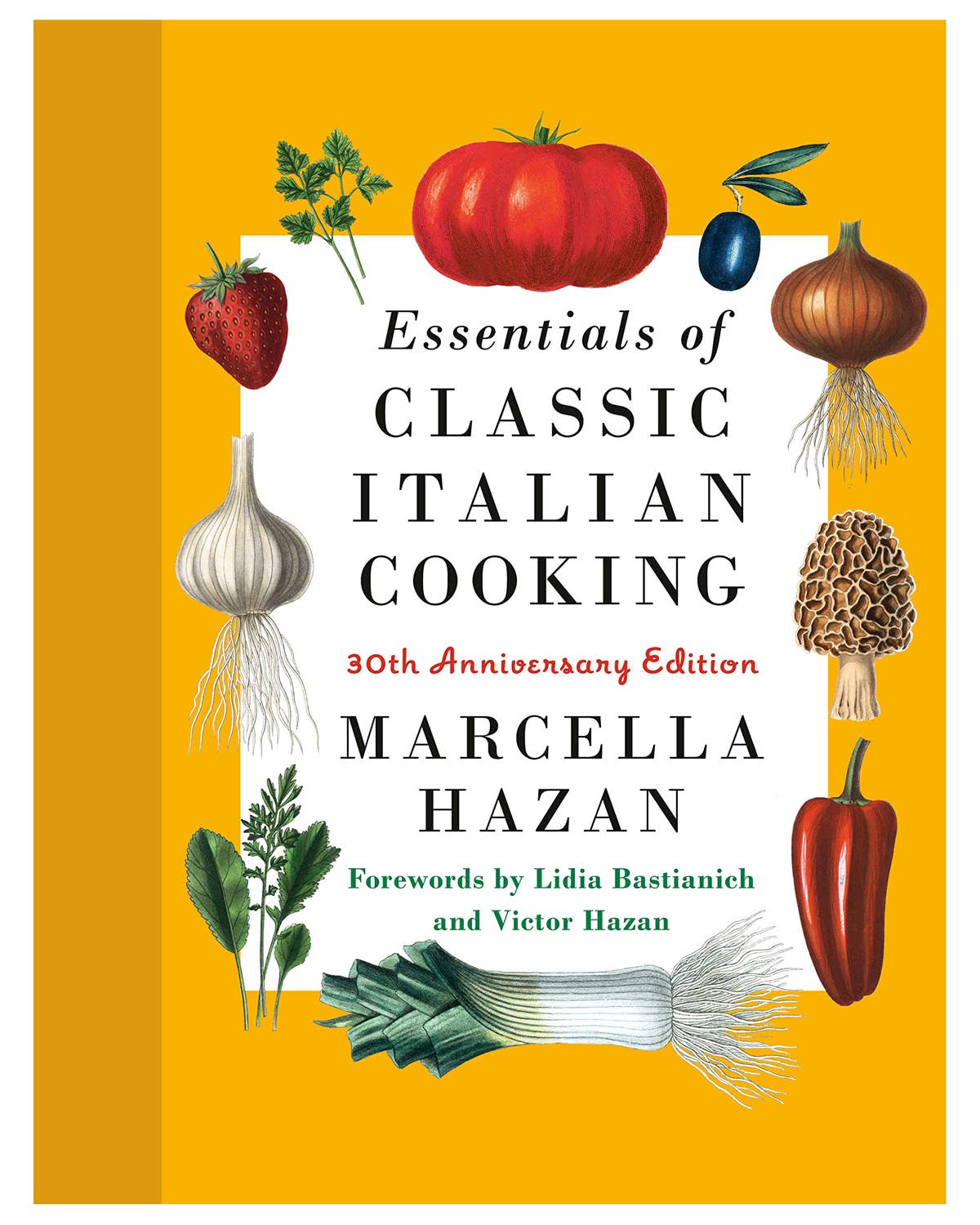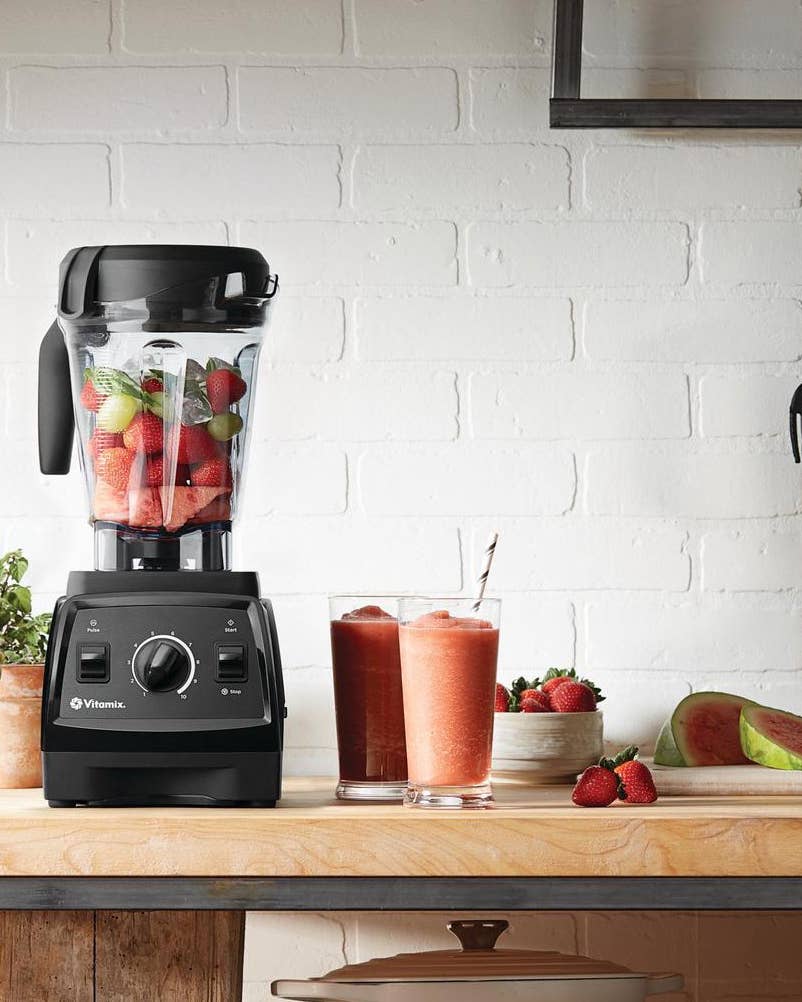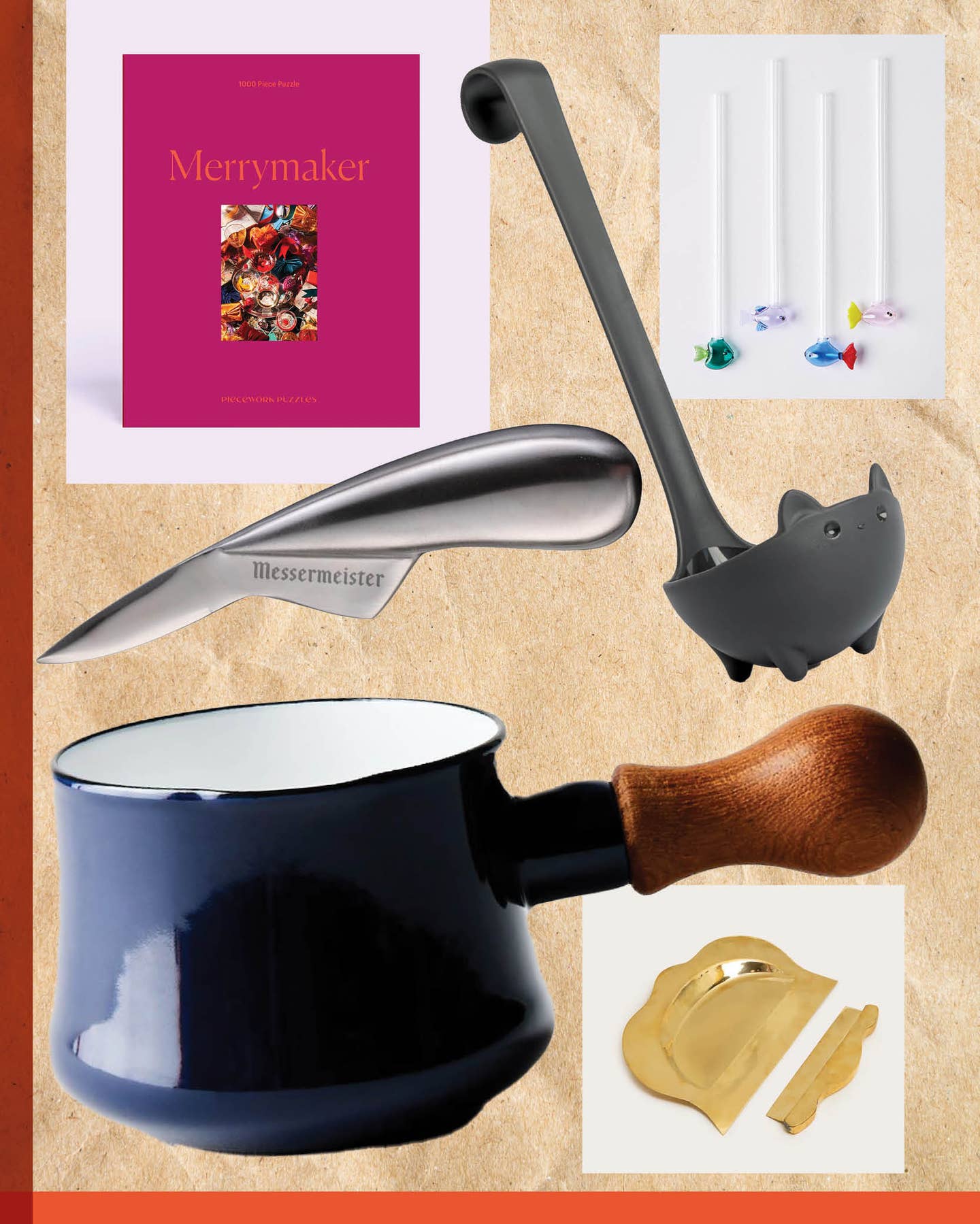Sift and Strain with the Best Colanders
This kitchen tool does everything you ask of it.
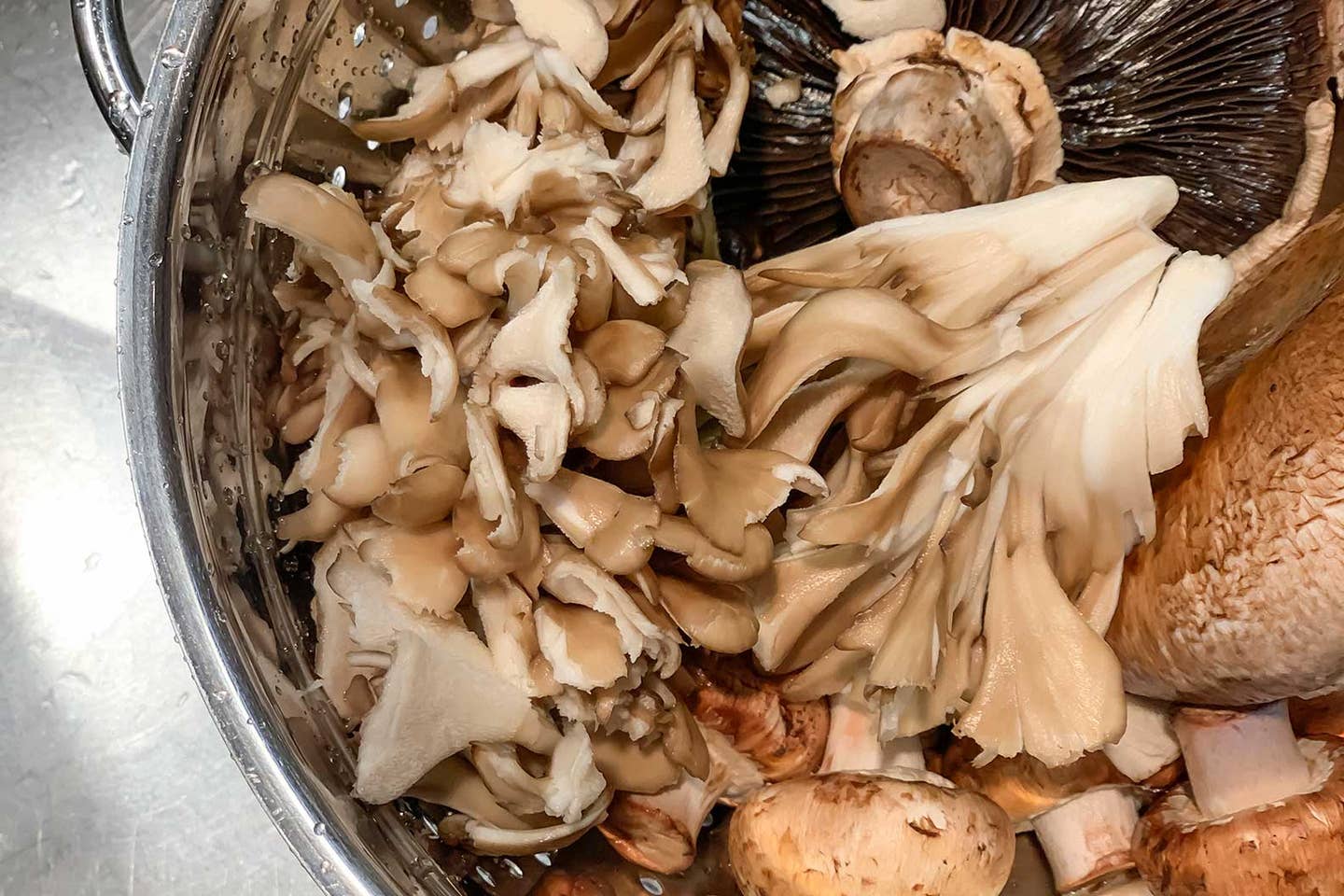
Any discussion of colanders inevitably leads to a gentle argument about kitchen semantics—namely, the big question: What’s the difference between a sieve, a strainer, and a colander? That’s probably because a lot of us, home cooks and pros alike, have used the tools for overlapping purposes, even though we know a colander is used for draining and a sieve (also referred to as a sifter) is used for sifting.
Construction may be the simplest way to differentiate between the two: Sieves are usually mesh while colanders are usually solid bowls with draining holes that are much larger. While a sieve can be used to drain things, the average colander isn’t terribly useful for sifting or rinsing anything small. Just try rinsing uncooked rice in a large colander: The minute you start swishing or spraying, you’ll watch that whole mess of rice go right through the holes and down the drain. So there are limits to multitasking.
Hannah Kirshner is a writer, artist, and food stylist, and author of Water, Woods & Wild Things, and she sees a lot of overlap in the sieve-vs.-colander debate. “If I can count a strainer as a colander, I have one that I like,” she says. “It’s probably the one I use the most, because you can use it to scoop something out of a pot and you can set it over a bowl. I like that versatility.”
Still, there are times when a colander needs to stand on its own. Food writer Lukas Volger, author of Start Simple, often finds himself using his colander as a sort of holding area. “I use it a lot, just getting things out of the way,” he said. “You wash lettuce in it and set it aside.”
Taking the lead from those experts, we looked at the whole spectrum of colanders, selecting those that do more than one thing well. Consider how you sift or strain most of the time—and how much space you have in the kitchen—and you’ll find that one (or more) of our best colanders is the perfect fit for your kitchen. Here are the best of the best:
- Best Overall: U.S. Kitchen Supply Stainless Steel Strainers
- Best Value: Priority Chef Colander
- Best for Lotsa Pasta: Williams Sonoma Melamine Colander
- Best for Rinsing and Drying Fruits and Veggies: Bamboo Bonzaru Strainer
- Best Set: Rorence Powder Coated Steel Colander
- Best for Rinsing and Spinning: Kitchen Tools Salad Spinner Fruit and Vegetable Washer
- Best for Rinsing and Counter Work: Makerstep Over the Sink Colander Strainer Basket
Features to Keep in Mind
Types of Colanders
Colanders come two ways—freestanding or long-handled—and either of these types can also be collapsible.
Shape, Size, and Material
Almost without exception, a colander is round, though oval styles do exist. Colanders vary greatly in size, but if you think in terms of pasta, they range from single-serve (2 cups) to the whole box of linguine (5 quarts). Any good colander will be made of a kitchen-tested material, but the longest-lasting, most versatile, and hardest-working colanders are made of stainless steel or melamine. There are colanders made of silicone, of course, and we’ve looked at them in the past. They’re often collapsible, and while they can be space savers, they have drawbacks. Volger has strong opinions about silicone colanders, noting that they can sometimes collapse at the worst of times. “I’m not a big fan of them,” he says. “I just generally don’t like silicone that much. Besides, it’s sticky.” He’s right, of course, because while silicone can be a wonder material in the kitchen, it does tend to stubbornly attract oils, meaning it can be tough to keep clean, and it can break down over time. Plastic? Kirschner won’t even consider it: “I definitely prefer the metal over plastic. They’re more durable. You can’t accidentally melt them. They’re not going to crack when they get old and dry out.”
Maintenance
If you’re lucky enough to have a dishwasher, the best colander for your kitchen is probably one that you can just pop right into the machine, because that hour or so of spraying and scrubbing will get it completely clean. The trick with any sieve, sifter, strainer or colander is do just that: Get it really, really, really clean. If you don’t get every nook and cranny clean and dry, food will build up, providing opportunity for mold growth. But you might want to skip the dishwasher if you choose to use your salad spinner as a colander (see Volger’s selection below); its soft plastic isn’t likely to fare well in the extreme heat of a dishwasher. Scrub that spinner basket well with a scrubby sponge, and be sure it’s completely dry before you put it away.
Our Top Picks
Best Overall: U.S. Kitchen Supply Stainless Steel Strainers
Best Overall
This is our top pick because each piece in the set offers sifting, straining, and draining capabilities. It’s very important to note the style of the “ear” on these handled strainers. You can find similar products that have a single, smaller ear at the top. Skip them, because that little ear doesn’t provide enough stability when you’re setting the strainer over a pot or bowl. That single, small ear will wobble and could dump everything if it slips. This set has a wide, stable ear.
Kirshner loves this sieve-style colander: “I think that the mesh strainer is actually more useful than a regular colander because you can wash rice in it, too.” She also advocates for a set like this if you’re setting up a first kitchen or crunched for space. These would also work well for one of Volger’s routine tasks: making seed or nut milks. “The fact that you can just kind of set it over a bowl or a pitcher makes it a little bit more functional that way,” he said. The smallest of these can easily be used to scoop blanched veggies out of a pot, too, and the largest will handle a meal’s worth of pasta.
Best Value: Priority Chef Colander
Best Value
If you have to stick with just one colander for rinsing and draining, this is the best colander for those purposes, and at a good price. The holes on this model are large enough for draining pasta easily, yet small enough that you can rinse rice or small beans without losing small bits down the drain. It has a nice, stable circular base, which is always going to be more stable than just little feet on the bottom. It stands sturdily on its own in the sink or on the countertop. Just about the only thing it won’t do well is sift flour. Dishwasher-safe stainless steel makes it easy to keep clean.
Best for Lotsa Pasta: Williams Sonoma Melamine Colander
Best for Lotsa Pasta
This is the style that Volger reaches for when it’s time to drain a meal’s worth of pasta or rinse lots of veggies. “It needs to be freestanding in the sink for draining pasta or for washing vegetables.” He also likes this style, lined with cheesecloth, for making homemade ricotta, a task that would be a lot more dicey if trying to balance a sieve-style strainer. Melamine is tough, nearly unbreakable, dishwasher safe, and very easy to clean.
Best for Rinsing and Drying Fruits and Veggies: Bamboo Bonzaru Strainer
Best for Rinsing and Drying Fruits and Veggies
Kirshner brought this style—one she first discovered in Japan—to our attention, and it’s a find. “I've gotten to really like using it,” she said. “It’s like a flat woven basket, and it’s the perfect thing for washing vegetables then letting them just kind of air-dry.” So it’s more of a sifter/rinser of larger things (think beans), but not useful for flours or pots of pasta. It can even be used as a serving plate or a charger, so it meets our multitasking standard. Plus, it’s just a lovely thing to have around.
Best Set: Rorence Powder Coated Steel Colander
Best Set
This is a lovely, countertop-worthy set of two colanders in powder-coated steel, which will hold up to heavy use. The 3-quart size is great for rinsing (even serving!) fresh berries, and the 5-quart colander offers enough space to even handle lasagna noodles.
Best for Rinsing and Spinning: Kitchen Tools Salad Spinner Fruit and Vegetable Washer
Best for Rinsing and Spinning
Space is at a premium in Volger’s kitchen, so he admits to making one tool serve many purposes. In this case, he uses the inner basket of his salad spinner to rinse almost anything—even to drain noodles. “I use my salad spinner like a wash basin,” he said. “Berries and all kinds of herbs and greens, small carrots, all my vegetables. It’s great because you can fully submerge things.” But he knows that this cheat has its limitations. “I have such a love-hate relationship with my salad spinner,” he says. “I use that insert inside as a colander, but I just find them really obnoxious to clean.” The crevices can collect bits, and they can develop mold. Volger got frustrated with a style that had so many moving parts it was impossible to keep clean, but this version is simple and about as low-maintenance as a spinner can get.
Best for Rinsing and Counter Work: Makerstep Over the Sink Colander Strainer Basket
Best for Rinsing and Counter Work
In researching best colanders, we were reminded of how handy it can be to be able to work with a colander that’s suspended over the sink. This version could—depending on how your kitchen is configured—work for just about anything except sifting flours. It’s great for rinsing veggies, as you can collapse the handles to dredge the whole thing in cool water, and then lift it out and rest it on the sides of the sink. And could be used to drain pasta or rice as well. The expandable sides and grippers on the arms make it nice and stable, but not all sinks are the same size, and not all have even ledges at the sides, so measure yours to be sure this fits.
Ask the Experts
Q: Can I use a colander as a steamer?
Yes, but before you start chopping and boiling, make sure you have a basket—either a strainer or a full-fledged colander—that fits reasonably well into the pot. What you really don’t want is some wobbly arrangement where hot water could splash or spill. The pot’s lid needs to fit reasonably tight, or you’ll steam the kitchen more than what’s in the pot. If you can’t get a satisfying ad-hoc fit from your colander and your chosen pot, it’s better to consider a purpose-designed, three-piece steamer pot.
Q: What is the best size for a colander?
Whether you choose the sort that’s mesh or the one with holes, you’ll probably want to have one that’s smaller (for single-serve and scooping), plus a larger one where there will be room to rinse lots of lettuce and drain lots of pasta.
Q: What is the difference between a colander and a strainer?
Colanders are primarily for draining, and usually have a bowl shape with holes that are drilled or punched all over. The “bowl” of a strainer will be made of metal mesh, with holes that are typically smaller than any colander. But most styles can be used for a variety of purposes in the kitchen.
Our Take
With colanders (and sifters, strainers, sieves, etc.), it’s not just about the utility of the item, but often about how much space you have in your kitchen for specialized tools. Maybe you have room for a graduated set of six gorgeous stainless-steel colanders, plus a set of fine-meshed sifters in four different sizes. If you have counter space, you might even add a colorful enameled, power-coated, or even antique colander just for the beauty of it. If you can swing it, by all means do. But if space or budget is limited, look for a colander that can do double duty without compromise.
Keep Reading
Continue to Next Story
